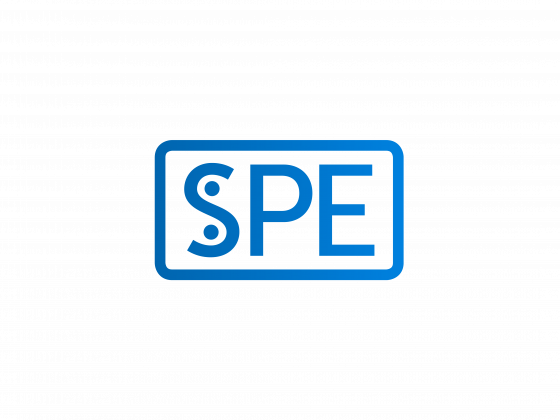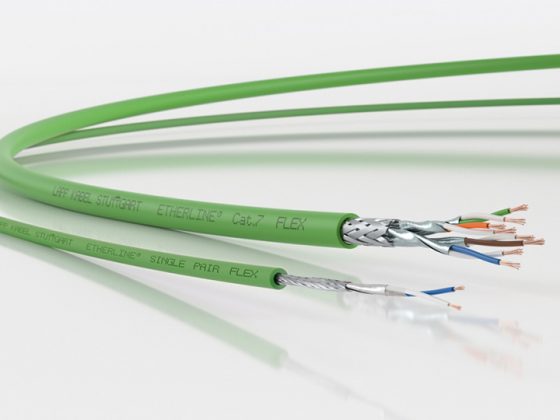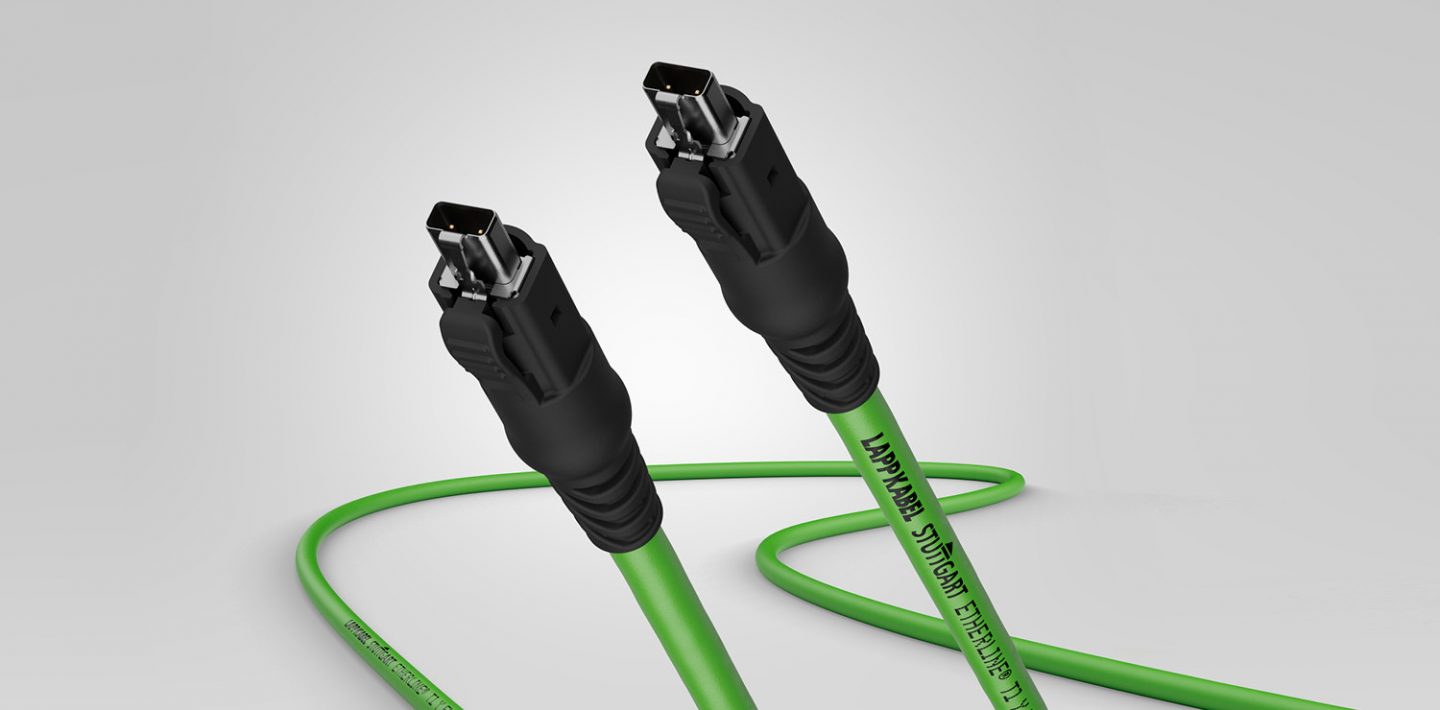
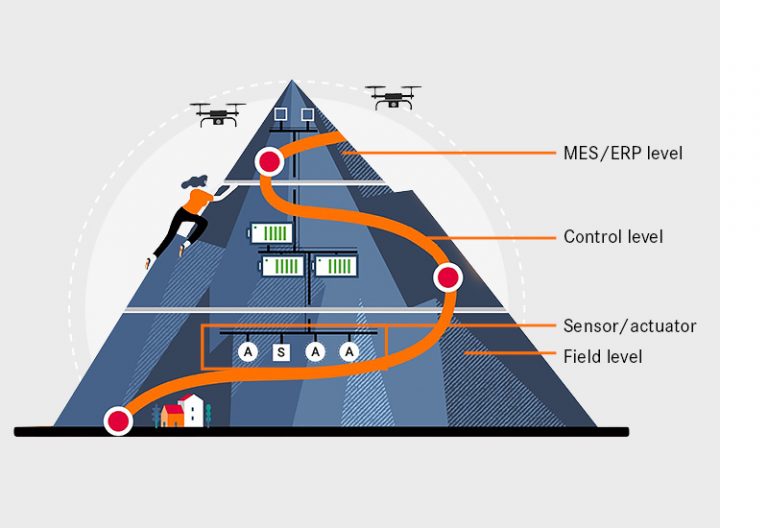
Plants, machines, controls, actuators, sensors and even tools and workpieces: In the factory of the future, everything is connected to everything – including the Internet and the cloud. Idea: Every physical object is attributed a virtual image. So far, though, the industrial Internet of Things has experienced a system discontinuity: While Ethernet has long been established as the communication standard at the control level of the automation pyramid, various fieldbus systems dominate down in the field level; some still work analogue even. If the promises of Industry 4.0 become reality, seamless communication across all levels is essential – the field level cannot remain an island of technology.
This requires new infrastructure here. It must be compatible with the Ethernet networks above it. At the same time, it should be cost-effective and space-saving, as space is tight in many machines.
The remedy is now: Single Pair Ethernet, or SPE for short. These cables have just one twisted pair, rather than the four pairs otherwise standard in Ethernet cables. This means SPE is almost as fast as multi-pair Ethernet, but it allows much larger distances, is more compact and requires less installation effort. SPE makes the field level smart and ensures consistent, reliable networking across the entire automation pyramid. This is possible worldwide thanks to standardisation.
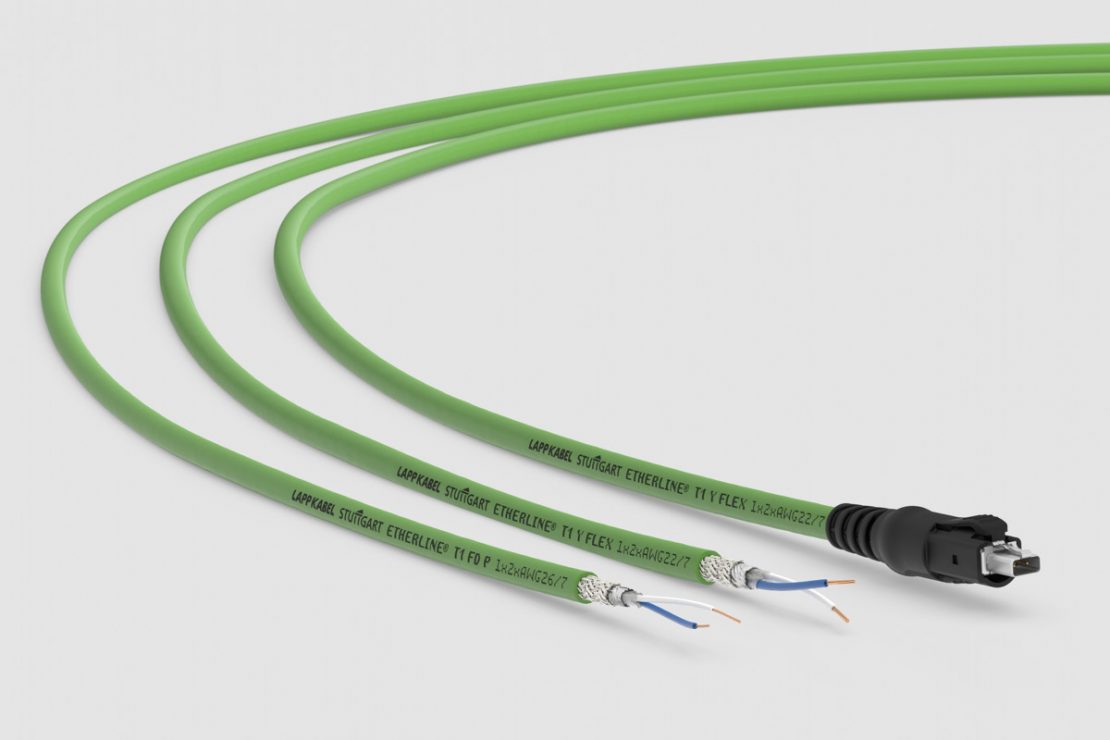
Partner network drives SPE forward
 In the SPE Industrial Partner Network, numerous electrical connection companies, such as cable and connector manufacturers, have joined forces to advance the technology. The members of the consortium expect SPE to replace the prevailing fieldbus systems today at sensor actuator level in the coming years, thus providing the basic infrastructure for intelligent sensors and actuators and the smart factory.
In the SPE Industrial Partner Network, numerous electrical connection companies, such as cable and connector manufacturers, have joined forces to advance the technology. The members of the consortium expect SPE to replace the prevailing fieldbus systems today at sensor actuator level in the coming years, thus providing the basic infrastructure for intelligent sensors and actuators and the smart factory.
But not only there – SPE has potential in many industries. In process automation SPE helps bridge long distances in large plants, for instance in the chemical industry. Analogue cables or fieldbuses with data transmission rates of just 31.25 kbit are still used here. For distances of up to 1000 metres, additional properties for the process industry were defined for SPE under the term APL (Advanced Physical Layer) based on 10BASE-T1L according to IEEE 802.3cg. For example, the APL takes account of intrinsic safety, which enables use in areas at risk of explosion.
In public transport, SPE is suitable for networking information systems, for example for displaying stops or reserving seats, for cameras for monitoring purposes or passenger counting, as well as for infotainment and WiFi. In battery-electric vehicles, SPE offers a more compact design with lower bending radii and thus more flexibility in engineering. SPE also saves weight: A cable with four wire pairs weighs around 4.6 kilograms per 100 metres, with SPE it only weighs 3.0 kg. In buildings automation, SPE can network sensors, for example in fire alarm systems, or in light or temperature sensors, as well as access control systems, information boards, e.g. for space assignment and much more.
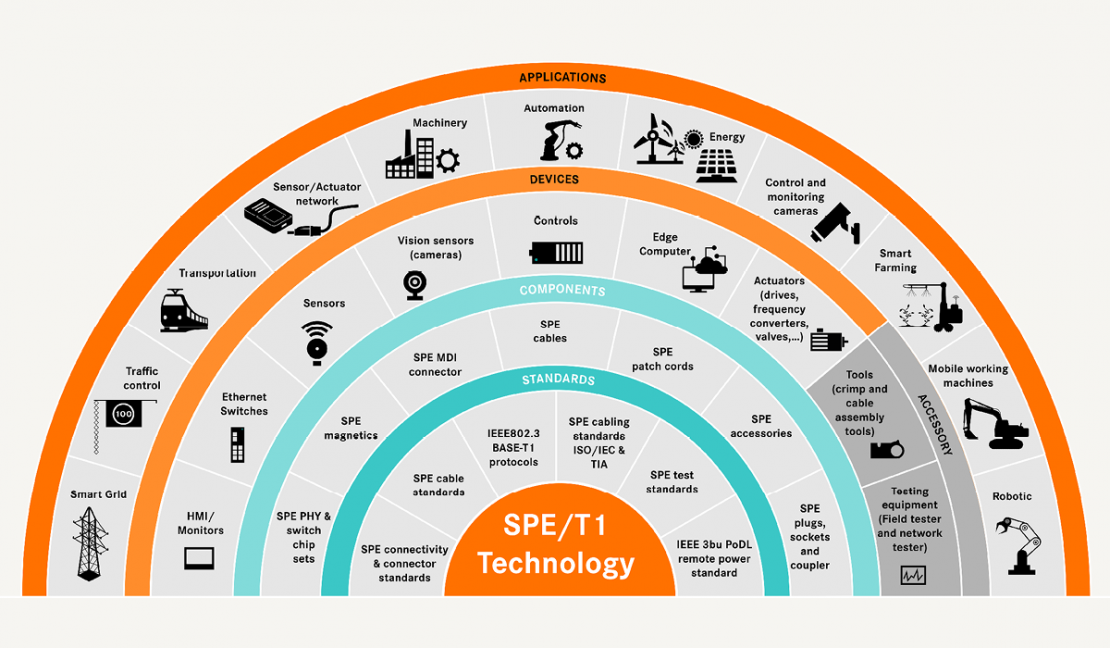
Search for the connector standard
LAPP recognised this potential and began developing industrial SPE cables early on – and can already supply them. The global market leader for integrated electrical connection systems is committed to standardisation in conjunction with other manufacturers of connection technology. SPE is already internationally standardised, laying the foundations for global expansion. Several suggestions have been introduced into the IEC 63171 standard for industrial connectors. LAPP favours the connector face in accordance with IEC 63171-6 and plays an active role in disseminating this standard by collaborating with the SPE Industrial Partner Network. The company thus contributes to making quick decision by the market. For users to plan and check a SPE network right now, they need planning and installation guidelines for the respective uses. These guidelines are developed for industrial Ethernet systems by user organisations such as PI for PROFINET or ODVA for ETHERNET/IP. LAPP is already working on this in working groups with the other member companies.
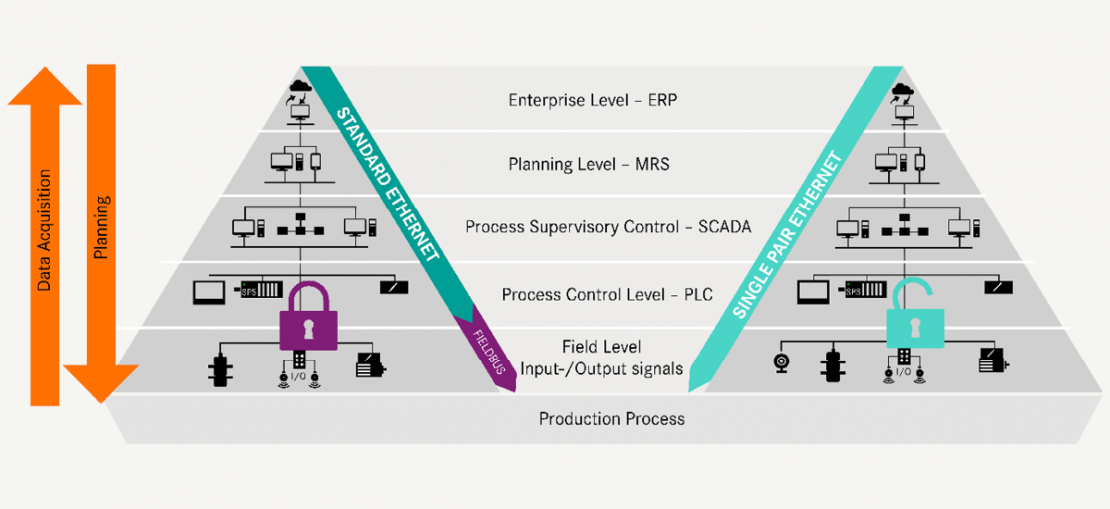
Get aboard now
Impressed? Before jumping on SPE, the following should be noted:
- As a potential user, you should already look at the new technology, identify fields of application and discuss these requirements with manufacturers such as LAPP. System decisions are now being made and the manufacturers need the customers’ requirements for system design.
- Users should now expand their technological knowledge of SPE. Manufacturers and the Industrial Partner Network already offer extensive information material such as webinars or e-learning. SPE technology is currently developing very rapidly – we should stay on the ball.
- Think outside the box. Things that previously seemed unthinkable are now possible. SPE is not only about reducing it to two cores, but also completely new network structures are possible: trunk capability, power over dataline (PoDL) or longer cable lengths are just a few examples. Anyone who stays abreast of the new possibilities and deploys them in their application can benefit from them as much as possible.
- On the other hand: Not every installation needs to be implemented in a single pair, just because this is possible. We should rather keep the entire Ethernet network in mind in production. In many cases, a 4-pair Ethernet installation still makes sense to avoid installing a “bottleneck”, just to save some copper. Users should remember that standard Ethernet devices must still be able to connect in the event of future plant expansion.
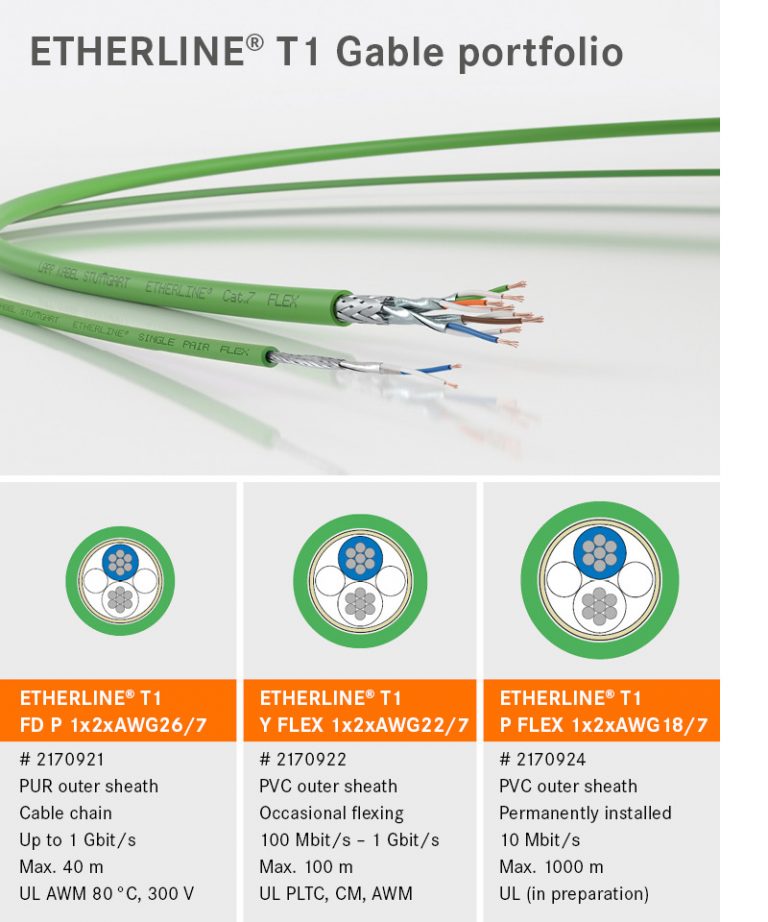
At a glance
The benefits of Single Pair Ethernet
- Networking with TCP/IP without system disruptions
- Every field participant can be addressed via IP
- Suitable for real-time critical applications thanks to TSN
- Substitute for the proliferation of proprietary fieldbuses
- Large distances up to 1000 metres
- This enables more flexibility in cabling and requires fewer switches
- Power supply to terminal devices via the same cable using PoDL
- Sustainable thanks to the omission of batteries compared to wireless systems
- Less material and weight
- Flexible and space-saving, e.g. in drag chains
- Easier and error-free installation
- Saves assembly time
- Higher operational reliability
- More economical
Further information on LAPP Industrial Ethernet:
Product Selection by Protocol Standard
Product Selection by Application

Video: © LAPP IIOT Statement

